In the diverse world of reptilian adaptations, few hunting strategies are as specialized and fascinating as that of the tentacled snake (Erpeton tentaculatum). This remarkable aquatic predator has evolved a unique method of using its tongue not for the typical reptilian purpose of scent collection, but as a trigger mechanism for an elaborate ambush strategy. Unlike most predatory snakes that actively pursue prey or rely on venom, the tentacled snake has developed a sophisticated trap-setting technique that showcases the incredible diversity of evolutionary adaptations in the animal kingdom. This serpent’s hunting method demonstrates nature’s capacity for developing specialized solutions to survival challenges in competitive environments.
The Tentacled Snake: A Unique Aquatic Predator
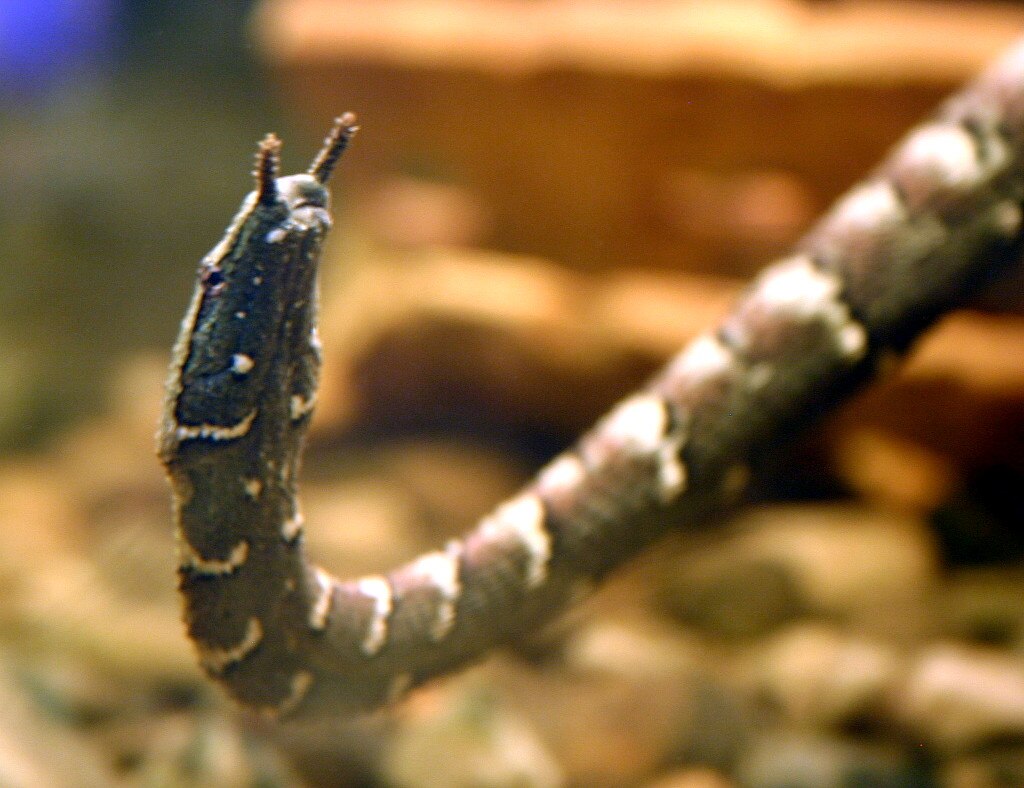
The tentacled snake is a relatively small aquatic reptile native to the freshwater systems of Southeast Asia, particularly in Thailand, Cambodia, and Vietnam. Growing to approximately 20-35 inches (50-90 cm) in length, this snake has evolved a body perfectly adapted to an entirely aquatic lifestyle. Its most distinctive feature, and the source of its common name, is the pair of short, fleshy tentacles that protrude from its snout, which contain numerous sensory cells that help it detect prey movements in murky water. The snake’s drab brown or grayish coloration provides excellent camouflage among underwater vegetation and muddy substrates, making it nearly invisible to the small fish it primarily hunts. Unlike many other snake species, tentacled snakes rarely if ever leave the water, spending their entire lives submerged in the warm, slow-moving waters of their native habitats.
Evolutionary History and Classification

The tentacled snake belongs to the family Homalopsidae, a group of rear-fanged aquatic snakes adapted to freshwater and brackish environments throughout Southeast Asia. Evolutionary biologists believe this specialized hunter diverged from other homalopsids between 25 and 30 million years ago, developing its unique hunting adaptations in response to the competitive pressures of densely populated aquatic ecosystems. As the only member of its genus Erpeton, this snake represents a specialized evolutionary branch with no close living relatives sharing its distinctive hunting strategy. Fossil records of tentacled snakes are extremely rare due to their aquatic lifestyle and the tropical environments they inhabit, which typically don’t preserve reptilian remains well. The snake’s taxonomic isolation and specialized adaptations make it a fascinating subject for researchers studying convergent evolution and predator-prey coevolution in aquatic environments.
The Elaborate J-Shaped Hunting Posture
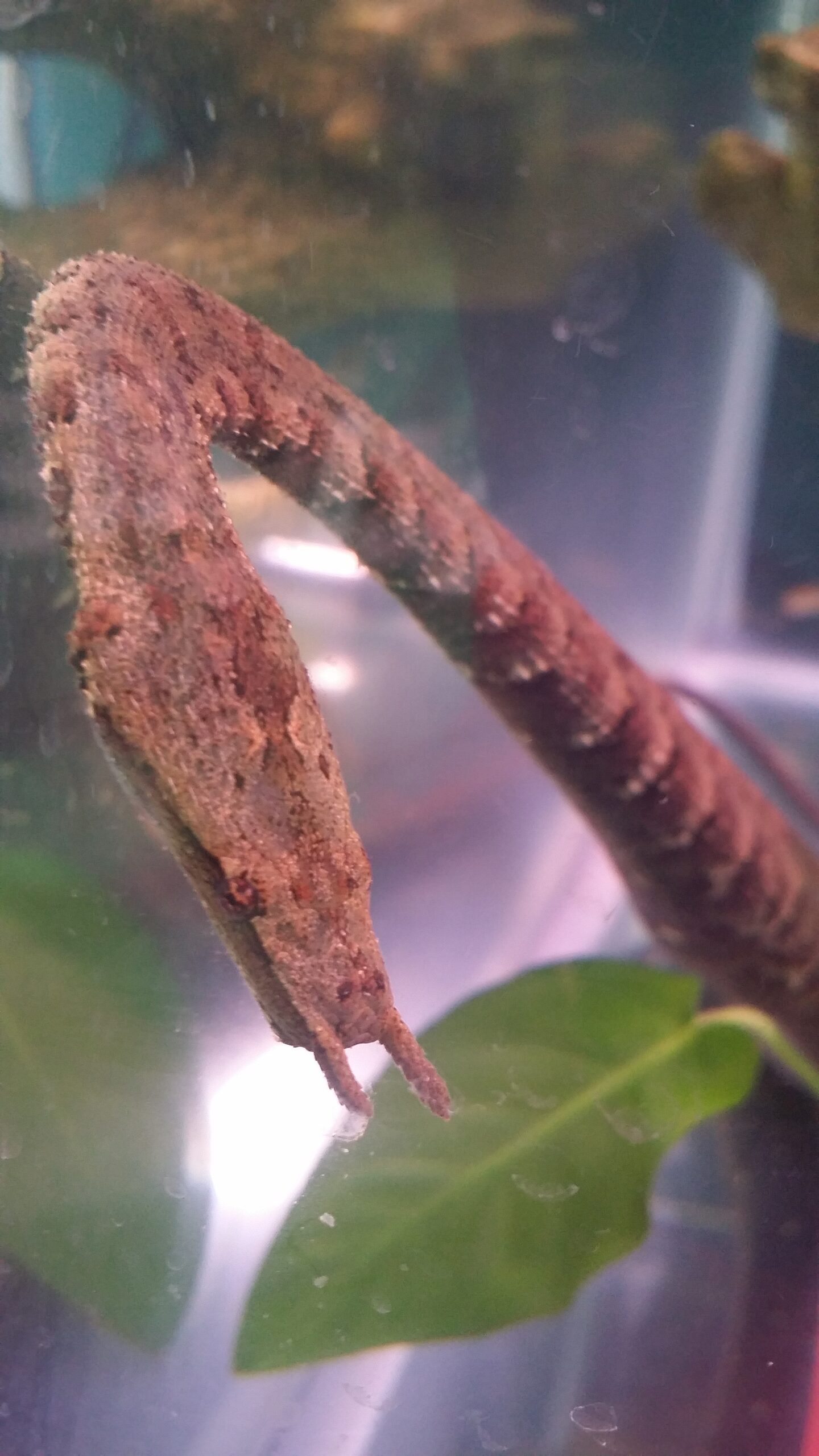
The foundation of the tentacled snake’s hunting strategy begins with its distinctive J-shaped posture, which it can maintain motionless for hours while waiting for prey. The snake positions its body with its head forming the hook of the “J,” creating a precise geometric trap customized for small fish that might swim nearby. This posture isn’t just a passive waiting position—it’s an integral component of a sophisticated predatory system that has been fine-tuned through millions of years of evolution. The rigid maintenance of this position requires specialized musculature that allows the snake to remain perfectly still without fatigue, even as it keeps its head poised at the perfect angle to execute its strike. Researchers have observed individual snakes maintaining this hunting posture for up to 8 hours without movement, demonstrating remarkable patience and physiological adaptation to this specialized hunting technique.
The Tongue as a Trigger Mechanism

Unlike most snakes that use their forked tongues primarily for collecting chemical information from their environment, the tentacled snake has repurposed this organ as an active part of its predatory arsenal. When in its hunting posture, the snake extends its tongue slightly into the water, where it serves as a lure that mimics the appearance of a small worm or invertebrate that might attract curious fish. However, beyond this luring function, the tongue plays an even more crucial role as a trigger mechanism for the snake’s precisely timed strike. When a fish approaches within striking distance, the snake uses subtle, controlled movements of its tongue to create nearly imperceptible water disturbances that help gauge the prey’s exact position, distance, and swimming trajectory. This sensory information allows the snake to calculate the perfect moment to initiate its lightning-fast strike, often executing the attack before the fish even realizes it’s in danger.
The C-Start Escape Response Prediction
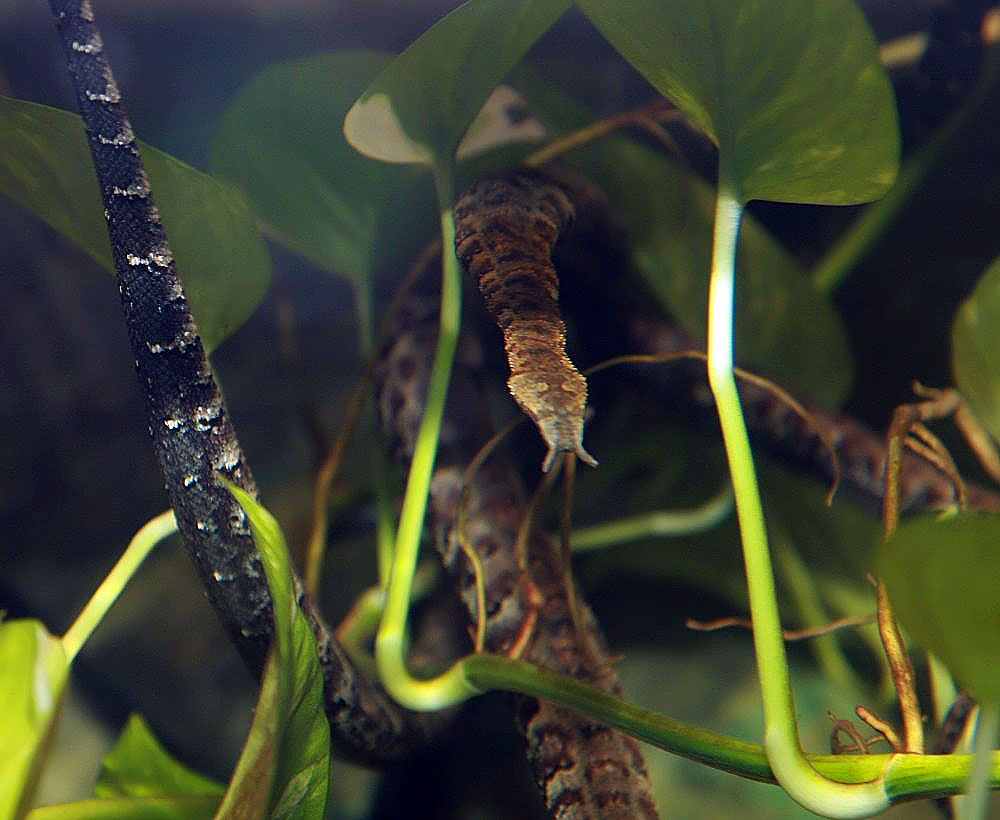
Perhaps the most remarkable aspect of the tentacled snake’s hunting strategy is its ability to predict and exploit the C-start escape response of fish—a reflexive escape maneuver where fish quickly bend their bodies into a C-shape to dart away from danger. Rather than striking directly at where the fish is located, the tentacled snake aims its strike at where the fish will be after initiating this escape response. The snake actually triggers the fish’s escape response with subtle movements of its body before the main strike begins, essentially “starting the clock” on the fish’s predictable escape sequence. High-speed video analysis has revealed that the snake’s strike is precisely timed and positioned to intercept the fish at the exact moment and location where its escape trajectory will carry it—directly into the snake’s open jaws. This predictive strike is so accurate that the snake often appears to miss its target initially, only for the fish to swim directly into its mouth milliseconds later.
Sensory Adaptations for Underwater Hunting
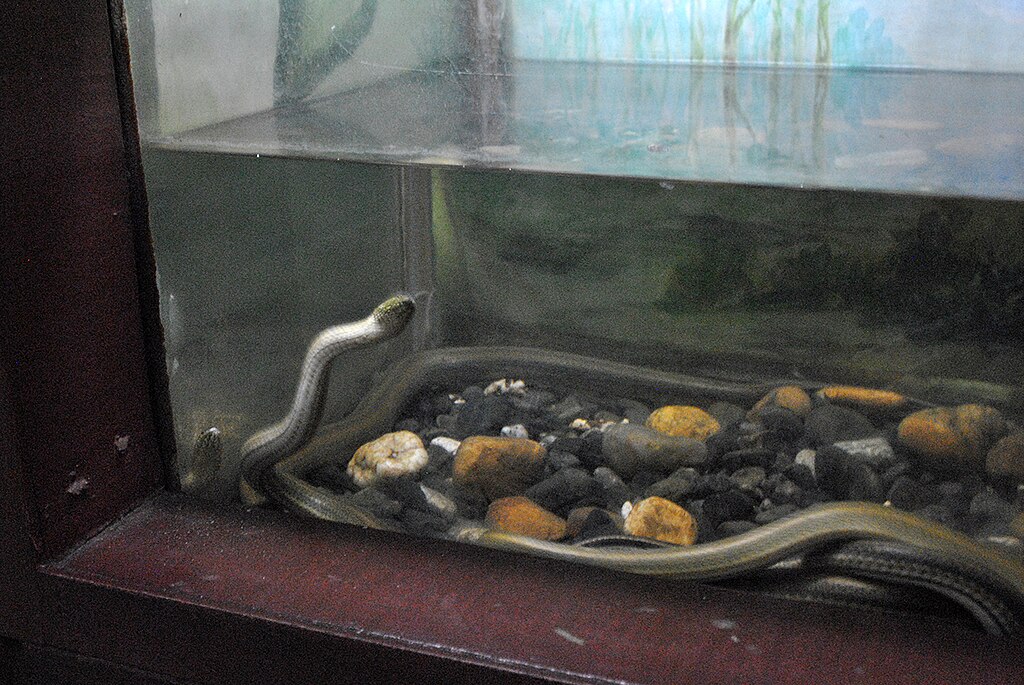
The tentacled snake possesses an impressive array of sensory adaptations that enable its specialized hunting technique in often murky, low-visibility environments. Its eponymous facial tentacles are packed with mechanoreceptors that can detect minute pressure changes in the water, allowing the snake to track prey movement even when visual information is limited. The snake’s eyes, positioned high on its head, can remain above the waterline while most of its body stays submerged, giving it excellent binocular vision to spot fish moving in the water below. Additionally, tentacled snakes possess specialized scale structures that can detect water movement patterns similar to the lateral line system found in fish, providing them with a detailed “image” of their surroundings based on water disturbances. These combined sensory adaptations create a sophisticated detection system that allows the snake to precisely time its strikes even in conditions of poor visibility where most predators would be at a significant disadvantage.
The Millisecond-Precise Strike Mechanics

The actual strike of the tentacled snake occurs with astonishing speed and precision, completing in less than 20 milliseconds—faster than a human can blink. Unlike many other predatory snakes that use their entire body to lunge forward in a strike, the tentacled snake primarily moves just its head and neck region in a short, explosive motion that minimizes water resistance and maintains stealth. The snake’s specialized cervical vertebrae and associated musculature allow for this high-speed, limited-range motion that generates minimal water disturbance until the final moment of attack. High-speed camera studies have revealed that the snake can accelerate its head at over 40 Gs during the strike, making it one of the fastest predatory movements in the animal kingdom. This combination of speed, limited movement range, and precise targeting allows the tentacled snake to consistently capture prey with success rates exceeding 80% in laboratory studies—remarkably high for an ambush predator.
Respiratory Adaptations for Prolonged Submersion
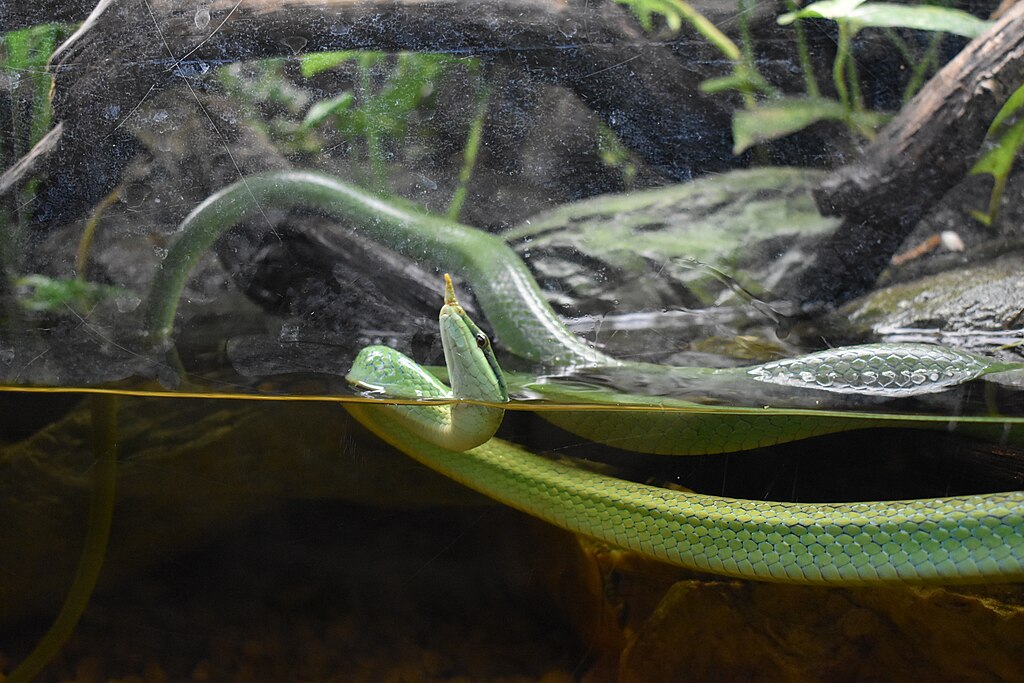
To maintain its aquatic lifestyle and extended periods of motionless hunting, the tentacled snake has evolved specialized respiratory adaptations that differ significantly from those of terrestrial snakes. Unlike most serpents, tentacled snakes can absorb up to 25% of their oxygen requirements directly through their skin (cutaneous respiration), reducing their need to surface for air. Their nostrils are equipped with special valves that can seal tightly when submerged, and they’re positioned high on the snout to allow breathing with minimal exposure above the water surface. The snake’s lungs have evolved to be highly efficient, extracting maximum oxygen from each breath and allowing individuals to remain submerged for up to 30 minutes between breaths during active periods, and significantly longer when resting. These respiratory specializations enable the tentacled snake to remain nearly motionless in its hunting posture for extended periods without disrupting its ambush position to breathe.
Dietary Specialization and Prey Selection
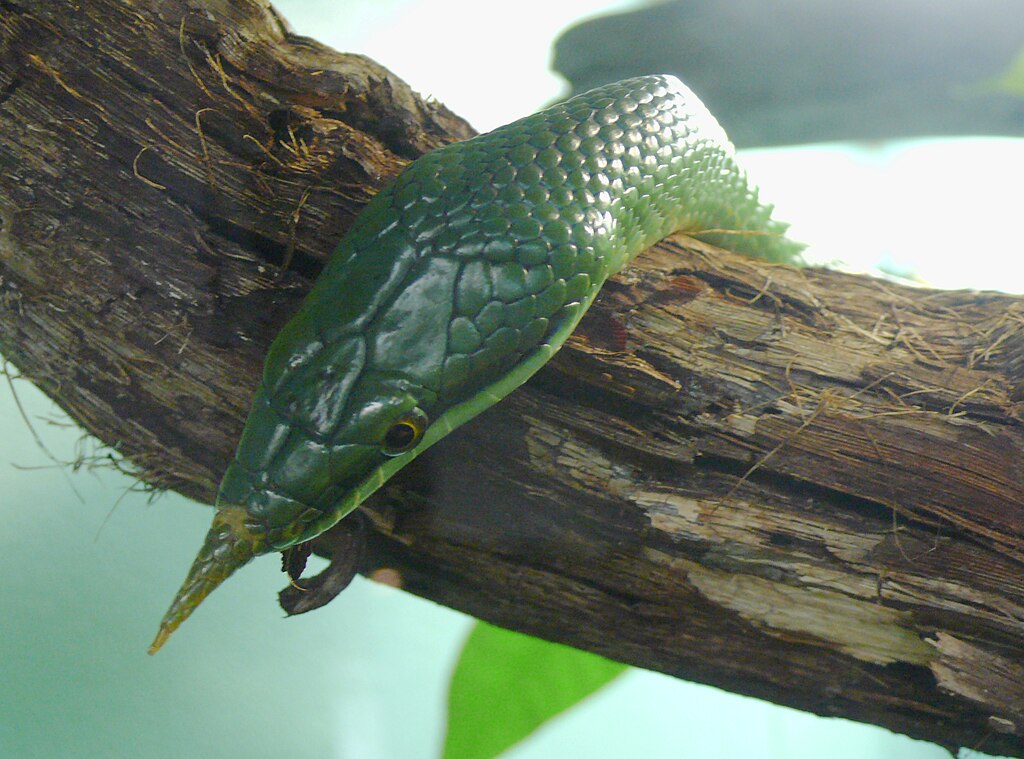
The tentacled snake’s diet consists almost exclusively of small fish, making it a highly specialized piscivore with feeding adaptations specifically evolved for capturing and consuming aquatic prey. Studies of wild specimens have revealed that these snakes predominantly target shallow-water fish species like Rasboras, small cyprinids, and juvenile cichlids that commonly inhabit the same slow-moving freshwater habitats. The snake shows a preference for fish of specific size ranges—typically 20-40% of its head width—that are large enough to provide substantial nutrition but small enough to be swallowed easily without requiring the extensive jaw dislocation seen in many other snake species. Interestingly, tentacled snakes have demonstrated the ability to modify their strike timing and angle based on the specific fish species they’re targeting, suggesting they can recognize different prey types and adjust their predatory strategy accordingly. Laboratory studies have shown that these snakes can distinguish between fish species that employ different escape trajectories, further highlighting the sophisticated nature of their hunting adaptations.
Reproduction and Life Cycle

Unlike many other aquatic snakes that must return to land to lay eggs, the tentacled snake has evolved to be fully aquatic throughout its entire life cycle, including reproduction. These snakes are ovoviviparous, meaning females retain fertilized eggs within their bodies until the young are fully developed, at which point they give birth to live young that are immediately capable of swimming and hunting. A typical clutch consists of 5-13 young, each measuring approximately 7-8 inches (18-20 cm) at birth and already displaying the distinctive tentacles and hunting behavior of adults. Remarkably, juvenile tentacled snakes are born with their specialized hunting instincts fully formed—newborns have been observed assuming the characteristic J-shaped hunting posture and successfully capturing small fish within hours of birth. The reproductive cycle appears to be seasonal in wild populations, with most births occurring during the rainy season when prey availability is highest, though captive specimens have been known to reproduce year-round when maintained under consistent conditions.
Conservation Status and Threats
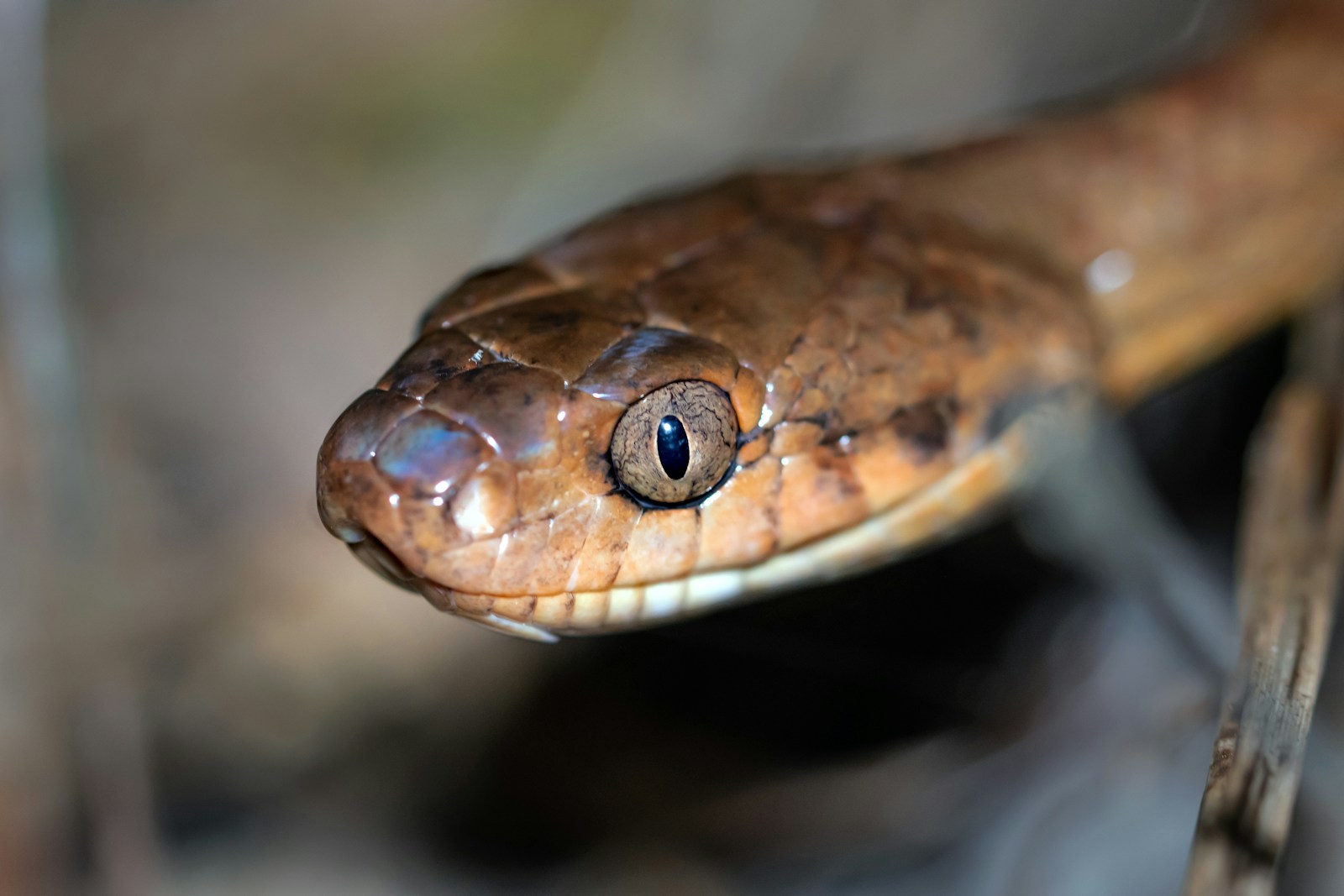
The tentacled snake is currently classified as a species of “Least Concern” on the IUCN Red List, though comprehensive population studies are lacking across much of its range. The primary threats to this specialized predator come from habitat destruction, particularly the drainage of wetlands and conversion of slow-moving waterways to agricultural use throughout Southeast Asia. Water pollution from agricultural runoff, industrial discharge, and urban development poses another significant threat, as these snakes appear to be sensitive to changes in water quality that can affect both their health and that of their fish prey. The international pet trade represents another potential pressure on wild populations, as tentacled snakes are sometimes collected for their novelty value in specialized reptile collections, though this remains a relatively minor threat compared to habitat loss. Conservation efforts focusing on wetland preservation in Southeast Asia indirectly benefit tentacled snake populations, though few programs specifically target this unique species for protection.
Scientific Research and Discoveries
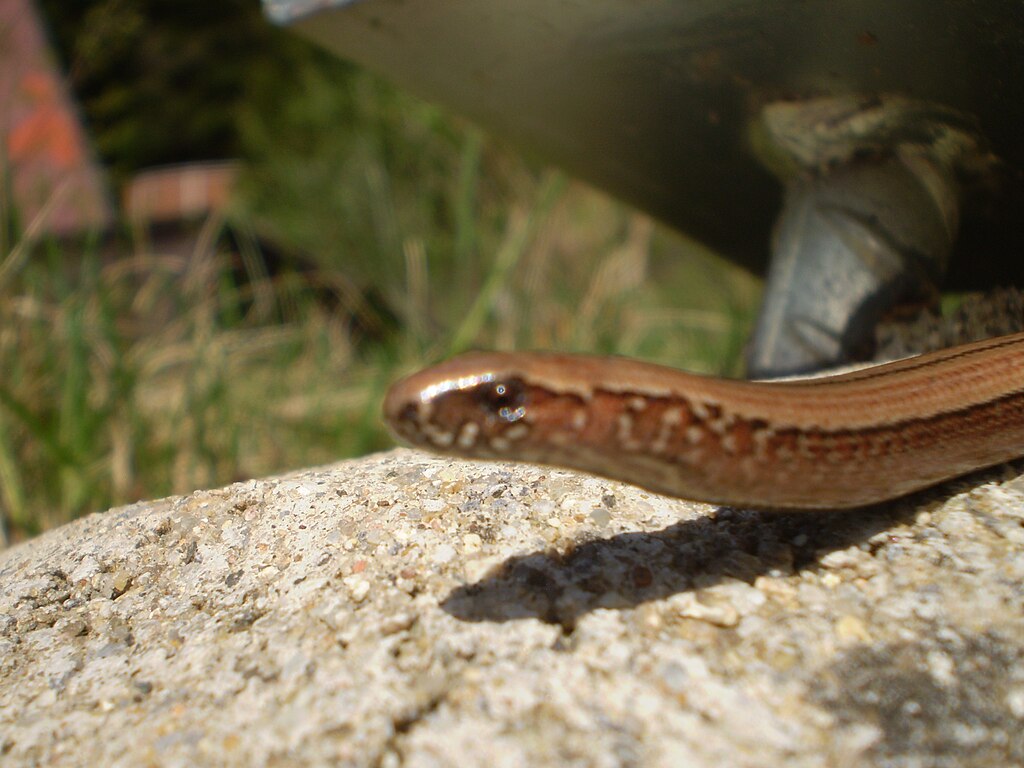
The tentacled snake has become an important subject for research in fields ranging from neurobiology to biomechanics due to its remarkable predatory adaptations. Dr. Kenneth Catania of Vanderbilt University has conducted pioneering research on the snake’s hunting behavior, using high-speed video analysis to document its predictive strike mechanism for the first time. His studies revealed that the snake’s ability to predict the C-start escape response represents one of the most sophisticated examples of predator-prey coevolution documented in vertebrates. Other researchers have investigated the snake’s specialized sensory systems, particularly the function of its distinctive facial tentacles, which contain dense concentrations of mechanoreceptors unlike those found in any other snake species. Recent genetic studies have begun exploring the molecular basis for the tentacled snake’s unique adaptations, identifying several genes that appear to have undergone accelerated evolution compared to other snake lineages. This ongoing research continues to yield insights not only into this remarkable species but also into broader questions about the evolution of specialized predatory systems in vertebrates.
Captive Care and Observations

The specialized nature of the tentacled snake makes it a challenging but rewarding species to maintain in captivity, where its unusual hunting behavior can be observed in detail. Successful long-term maintenance requires specific aquarium setups that mimic the snake’s natural habitat, including warm water (75-82°F/24-28°C), neutral pH levels, and abundant aquatic vegetation that provides both cover and support for the snake’s distinctive hunting posture. Specialized feeding regimens are necessary, as most captive specimens will only accept live fish prey, showing little interest in non-moving food items. Zoos and research facilities that maintain tentacled snakes have contributed significantly to our understanding of their behavior by allowing detailed observation of hunting techniques that would be nearly impossible to document in their murky natural habitats. The Tennessee Aquarium and Bronx Zoo have maintained successful breeding populations, allowing for intergenerational studies of hunting behavior development and providing important data on growth rates, longevity, and reproductive biology that complement field studies of wild populations.
Conclusion

The tentacled snake represents one of nature’s most remarkable examples of specialized predatory adaptation. Its unique hunting strategy—using its tongue as part of an elaborate trap-triggering mechanism while predicting the escape response of its prey—showcases the incredible precision that can evolve through natural selection. This specialized hunter has adapted every aspect of its anatomy and behavior to excel in its niche, from its respiratory system to its sensory adaptations and strike mechanics. As research continues, the tentacled snake serves as a powerful reminder of the diverse and often unexpected solutions that evolution can produce in response to ecological challenges, making it a fascinating subject for both scientific study and nature appreciation.





